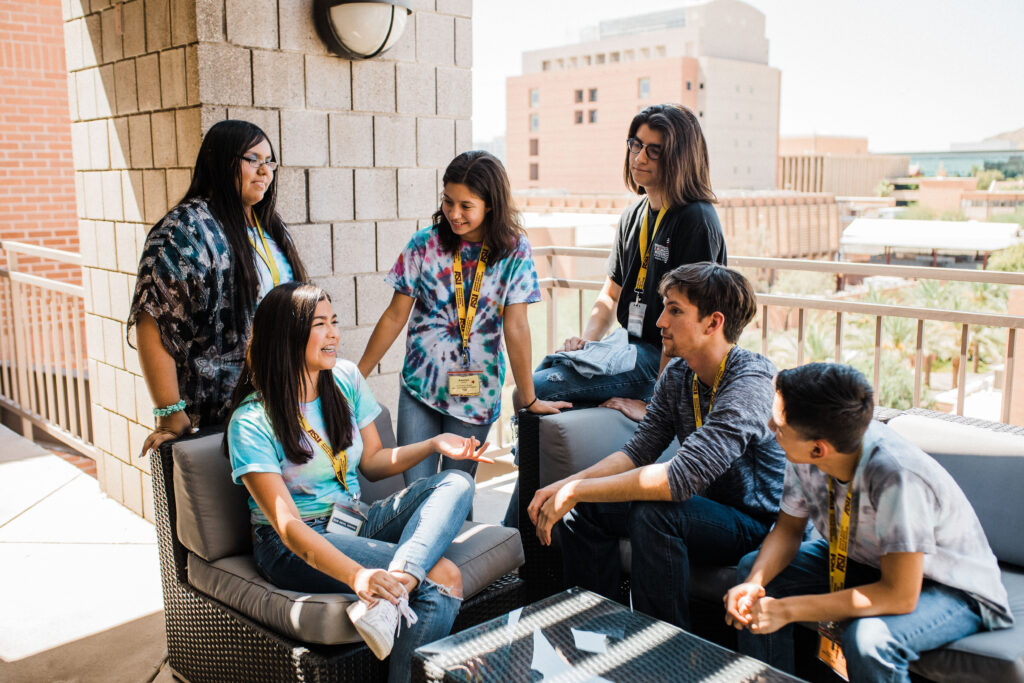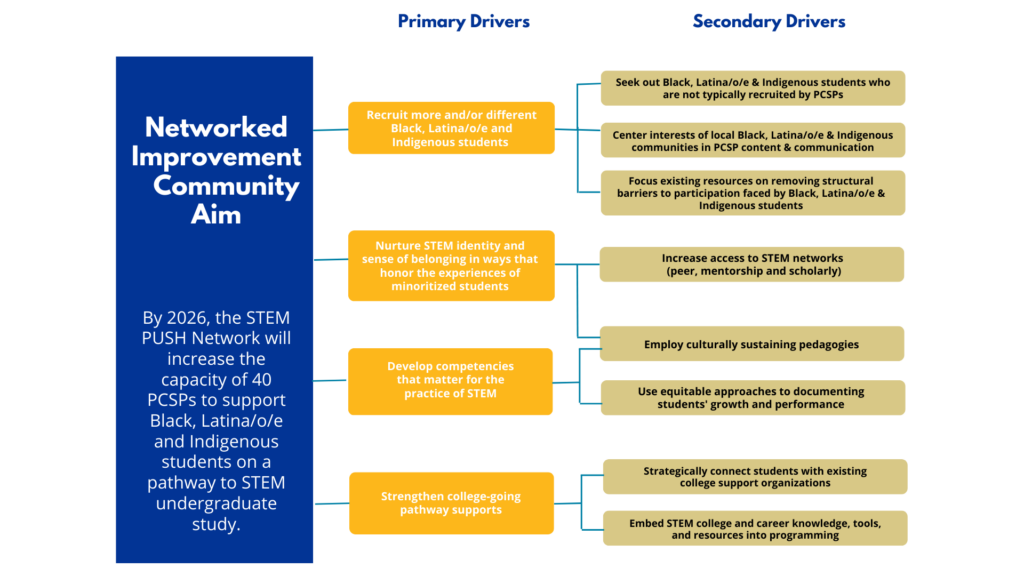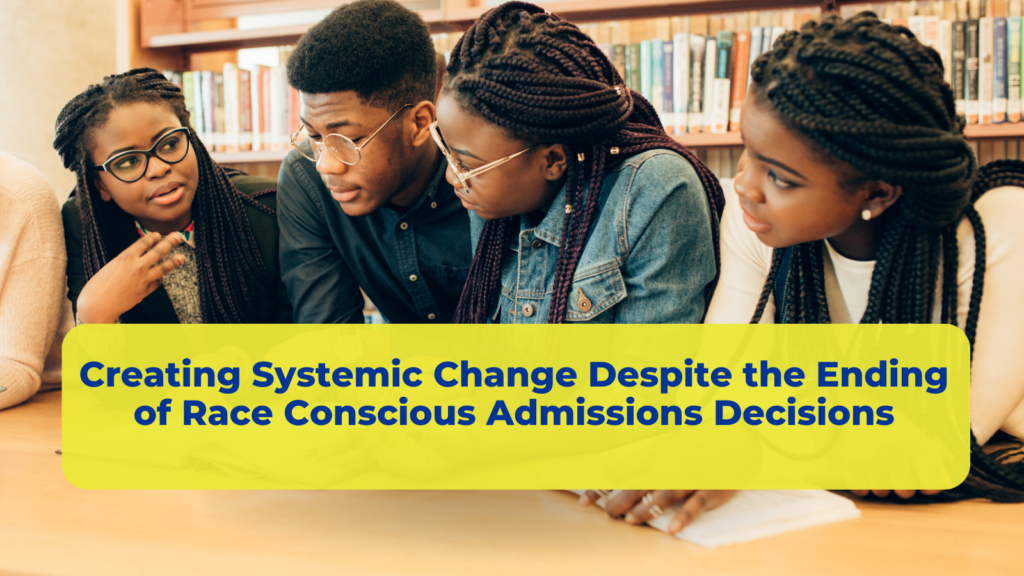Stay In Touch
Give us your email and we'll keep you in the loop on the latest STEM Push News.
A theory of improvement is a set of hypotheses about how we get to meaningful collective impact on our shared problem.
A theory of improvement is a set of hypotheses about how we get to meaningful collective impact on our shared problem. It combines our understanding of the system creating the problem we are seeking to solve with our “best bets” about the most high-leverage areas we can target to achieve our aim.
A driver diagram represents our working theory of improvement, and is therefore subject to revision as we learn. We use it to organize, capture learning, and then refocus our work together. Our driver diagram articulates the overarching aim that STEM PUSH Alliance partners are collectively working toward, the shared aim of the Networked Improvement Community (NIC) specifically, and the key drivers that we’re targeting in order to achieve that aim.

As part of the NIC, pre-college STEM programs test “change ideas” rooted in our working theory of improvement, which identifies the key levers we believe will increase programs’ capacity to serve students and move us towards our collective aim of increasing STEM undergraduate enrollment and persistence. Programs engage in improvement cycles during which they implement change ideas and work with STEM PUSH improvement science experts to use tools and metrics which support testing these changes as part of a disciplined inquiry process.
Our networked improvement community tests change ideas against our overall aim to increase the capacity of pre-college STEM programs to support students on pathways to STEM undergraduate studies.
Here is a deep dive into our change ideas identified at the beginning of our work.
Driver Diagram informing STEM PUSH work in 2023-2024:


Join Us for a Conversation about Equity, STEM & College Admissions
Wednesday, October 11 at 1:00 p.m. ET
Give us your email and we'll keep you in the loop on the latest STEM Push News.